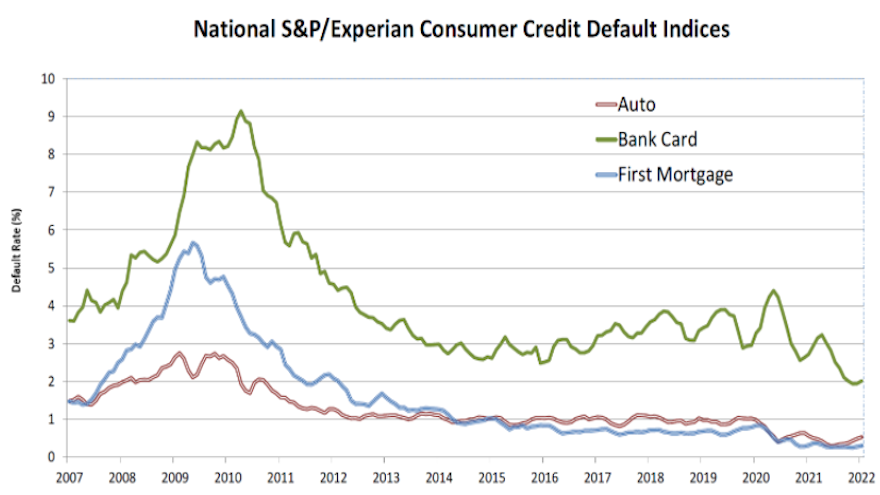Auto defaults now up for 7 straight months

Chart courtesy of S&P Dow Jones Indices and Experian.
By subscribing, you agree to receive communications from Auto Remarketing and our partners in accordance with our Privacy Policy. We may share your information with select partners and sponsors who may contact you about their products and services. You may unsubscribe at any time.
NEW YORK –
Make it seven months in a row that analysts have spotted an uptick in auto defaults.
And it’s also the longest upward streak in a decade.
The auto portion of the S&P/Experian Consumer Credit Default Indices moved higher again in January, according to data released on Tuesday by S&P Dow Jones Indices and Experian. The auto default rate came in at 0.53%, marking a rise of 4 basis points month-over-month.
This seven-month streak of increases began in June when the S&P Dow Jones Indices and Experian information showed auto defaults at an all-time low at 0.30%.
While the rising stretch represents the longest streak going back 10 years, the cumulative increase of 23 basis points still leaves the auto default rate 46 basis points below the reading recorded in January 2020.
Meanwhile, experts from S&P Dow Jones Indices and Experian said the composite rate — which represents a comprehensive measure of changes in consumer credit defaults — ticked up 3 basis points in January to 0.43%.
Subscribe to Auto Remarketing to stay informed and stay ahead.
By subscribing, you agree to receive communications from Auto Remarketing and our partners in accordance with our Privacy Policy. We may share your information with select partners and sponsors who may contact you about their products and services. You may unsubscribe at any time.
Experts added that the bank card default rate increased 7 basis points to 2.02%, while the first mortgage default rate came in 3 basis points higher at 0.31%.
Look at the largest U.S. cities, the S&P Dow Jones Indices and Experian data indicated four of the five major metropolitan areas showed higher default rates in January compared to previous month.
New York posted the largest increase, rising 17 basis points to 0.50%, more than doubling the combined increases of other three cities that had upticks.
Chicago increased 3 basis points to 0.47%. Los Angeles ticked up 2 basis points to 0.38%, while Dallas edged 1 basis point higher to 0.50%.
Miami reversed course in January and fell 4 basis points to 0.93%. Miami closed 2021 with a default jump of 24 basis points.
Jointly developed by S&P Indices and Experian, analysts noted the S&P/Experian Consumer Credit Default Indices are published monthly with the intent to accurately track the default experience of consumer balances in four key loan categories: auto, bankcard, first mortgage lien and second mortgage lien.
The indices are calculated based on data extracted from Experian’s consumer credit database. This database is populated with individual consumer loan and payment data submitted by lenders to Experian every month.
Experian’s base of data contributors includes leading banks and mortgage companies and covers approximately $11 trillion in outstanding loans sourced from 11,500 lenders.


